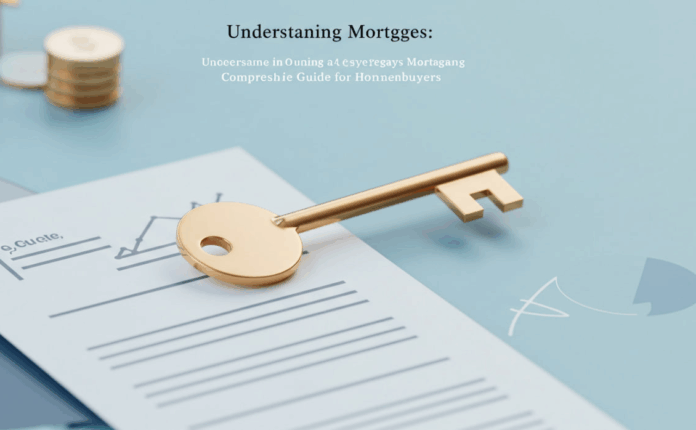Buying a home is one of life’s biggest milestones, but the mortgage process can feel overwhelming. Whether you’re a first-time buyer or refinancing an existing loan, understanding mortgages empowers you to make informed decisions. In this guide, we’ll break down the essentials, from basics to advanced strategies, with practical steps to help you secure the right loan without unnecessary stress.
What is a Mortgage?
At its core, a mortgage is a loan specifically designed to help you purchase property. You borrow money from a lender—typically a bank, credit union, or online financier—to cover the home’s cost, and you repay it over time with interest. The property serves as collateral, meaning if you default, the lender can foreclose and sell it to recover their funds.
Mortgages differ from other loans because they’re long-term (often 15–30 years) and tied to real estate values. Monthly payments, known as principal and interest (P&I), cover the loan amount plus interest. Many include escrow for taxes and insurance, making your total payment higher but more predictable.
Key terms to know:
- Principal: The original loan amount.
- Interest Rate: The cost of borrowing, expressed as a percentage.
- Amortization: How payments gradually reduce the principal over time.
- Down Payment: Your upfront cash contribution, usually 3–20% of the home price.
Understanding these builds a strong foundation for smarter borrowing.
Types of Mortgages
Not all mortgages are created equal. Choosing the right type depends on your financial stability, risk tolerance, and long-term plans. Here’s a rundown of the most common options.
Fixed-Rate Mortgages
In a fixed-rate mortgage, your interest rate stays the same for the entire loan term, locking in predictable payments. This stability is ideal if you plan to stay in your home long-term.
- Pros: Shields you from rate hikes; easy budgeting.
- Cons: Higher initial rates than adjustable options; less flexibility if rates drop (though you can refinance).
- Common Terms: 15 years (higher payments, less interest overall) or 30 years (lower payments, more interest paid).
Actionable Tip: Use an online amortization calculator to compare total costs. For a $300,000 loan at 6% over 30 years, you’d pay about $1,799 monthly, versus $2,531 for 15 years—but save over $200,000 in interest with the shorter term.
Adjustable-Rate Mortgages (ARMs)
ARMs start with a lower introductory rate for a set period (e.g., 5/1 ARM means 5 years fixed, then annual adjustments). After that, rates fluctuate based on market indexes like the SOFR (Secured Overnight Financing Rate).
- Pros: Lower starting payments; great for short-term ownership or if you expect income growth.
- Cons: Payments can rise sharply; requires monitoring economic trends.
Actionable Tip: If opting for an ARM, review the adjustment caps (e.g., 2% per year, 6% lifetime) and index history. In a rising-rate environment like 2023–2024, this could add hundreds to your monthly bill.
Government-Backed Mortgages
These are insured or guaranteed by federal agencies, making them accessible for those with lower credit or smaller down payments.
- FHA Loans: For first-time buyers; requires just 3.5% down but includes mortgage insurance premiums (MIP).
- VA Loans: For military veterans; no down payment or PMI, but a funding fee applies.
- USDA Loans: For rural buyers; zero down payment, income limits apply.
Actionable Tip: Check eligibility on official sites like HUD.gov. These loans often have stricter property standards but can save thousands upfront.

Jumbo Mortgages
For high-value homes exceeding conforming loan limits (around $766,550 in most areas as of 2025), jumbos require stronger credit (typically 700+ FICO) and larger down payments (10–20%).
- Pros: Funds luxury purchases.
- Cons: Higher rates and fees due to increased lender risk.
How to Qualify for a Mortgage
Lenders assess your ability to repay based on the “5 Cs”: Credit, Capacity, Capital, Collateral, and Conditions.
Credit Score and History
Aim for a FICO score of 620+ for conventional loans, 580+ for FHA. Pay bills on time, keep credit utilization under 30%, and avoid new debt inquiries.
Actionable Tip: Pull your free credit reports from AnnualCreditReport.com and dispute errors. Even a 20-point boost can lower your rate by 0.25%, saving $50+ monthly on a $300,000 loan.
Debt-to-Income Ratio (DTI)
Lenders prefer front-end DTI (housing costs) under 28% and back-end (all debts) under 36%. Calculate: (Monthly debts ÷ Gross income) × 100.
Actionable Tip: Pay down high-interest credit cards before applying. If your DTI is 45%, consider a co-signer or delaying the purchase.
Employment and Income Stability
Show two years of steady work. Self-employed? Provide tax returns. Gig workers may need extra documentation.
Down Payment and Reserves
Save 3–20% down; have 2–6 months of reserves post-closing.
Actionable Tip: Explore down payment assistance programs via DownPaymentResource.com—many states offer grants up to $15,000 for qualifying buyers.
Steps to Apply for a Mortgage
Getting pre-approved early strengthens your offer. Here’s a streamlined process:
- Shop Lenders: Compare rates from 3–5 sources (banks, brokers, online). Use tools like Bankrate for quotes.
- Gather Documents: W-2s, pay stubs, bank statements, tax returns.
- Get Pre-Approved: Submit for a letter valid 60–90 days.
- House Hunt: Stick to your budget—factor in closing costs (2–5% of loan).
- Submit Full Application: After offer acceptance; appraisal and underwriting follow (30–45 days).
- Close: Review Loan Estimate and Closing Disclosure; wire funds.
Actionable Tip: Lock your rate for 30–60 days during underwriting to hedge against hikes.
Tips for Getting the Best Mortgage Rates
Rates fluctuate daily, influenced by Fed policies and inflation. As of mid-2025, expect 6–7% for 30-year fixed.
- Improve Your Profile: Boost credit, reduce debt.
- Buy Points: Pay upfront (1 point = 1% of loan) to lower rate by ~0.25%.
- Time It Right: Apply when rates dip; monitor via Freddie Mac’s weekly survey.
- Consider Buydowns: Temporarily lower rates via seller concessions.
Actionable Tip: If rates are high, explore builder incentives or wait for economic shifts—patience can save tens of thousands.
Common Mistakes to Avoid When Getting a Mortgage
- Overborrowing: Don’t max your approval; leave room for life changes.
- Skipping the Fine Print: Read addendums for prepayment penalties.
- Ignoring Fees: Watch origination (1%) and appraisal ($500) costs.
- Changing Jobs Mid-Process: It triggers re-verification.
Actionable Tip: Hire a fee-only financial advisor for a second opinion on loan terms.
Pros and Cons of Taking Out a Mortgage
Pros
- Builds equity and wealth through appreciation.
- Tax deductions on interest (up to $750,000 debt).
- Fixed payments aid long-term planning.
Cons
- Ties you to one location.
- Interest adds significant cost (e.g., doubles a 30-year loan).
- Foreclosure risk if payments lapse.
Overall, mortgages are powerful wealth-builders when managed wisely.
FAQ
What credit score do I need for a mortgage?
Most lenders require 620+ for conventional loans, but FHA accepts 580+. Higher scores unlock better rates.
How much house can I afford?
Use the 28/36 rule: Housing costs ≤28% of income; total debts ≤36%. Factor in utilities and maintenance (~1% of home value yearly).
Should I get a 15- or 30-year mortgage?
Choose 15-year for faster payoff and less interest if affordable; 30-year for lower payments if building equity gradually.
Can I remove private mortgage insurance (PMI)?
Yes, once you reach 20% equity (via payments or appreciation). Request cancellation automatically at 22%.
What if interest rates drop after I lock in?
Refinance when savings exceed 0.5–1% drop, but weigh closing costs (~2–5% of loan). Aim for at least 2 years in the home to break even.
This guide equips you to tackle mortgages confidently. Consult a lender for personalized advice—your dream home awaits!



